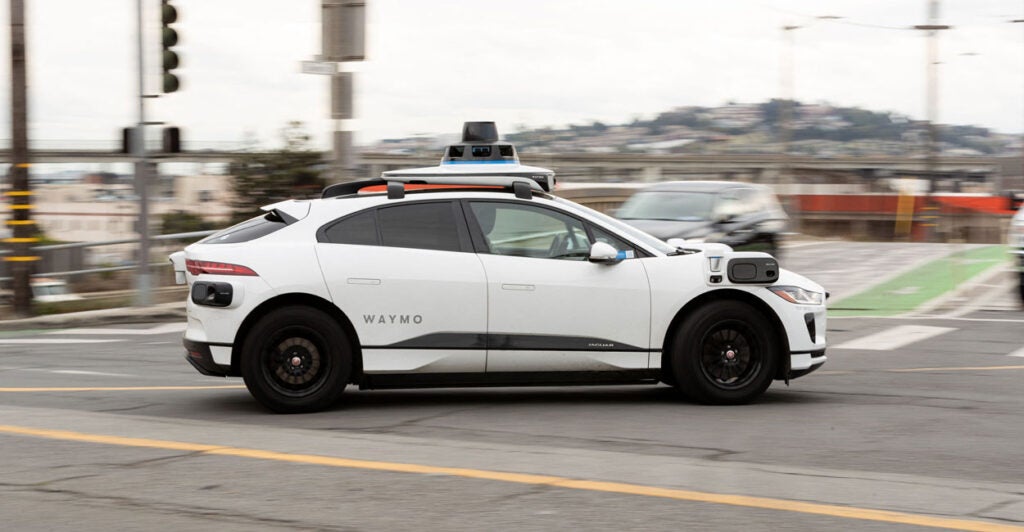The driverless car is here!
Finally.
Google has harnessed artificial intelligence to create a self-driving car it calls Waymo, standing for “Way Forward in Mobility.”
Regulators in San Francisco and Phoenix legalized Waymo cars because the robo-cars drive better than people do. They’ve already driven millions of miles on public roads without any fatalities. Not one. No injuries either.
Waymo achieves that with sensors attached to the top and sides of the cars. The sensors constantly shoot out lasers that bounce back, telling the car precisely where other objects are.
The magic of the driverless vehicle is the artificial intelligence behind the sensors. That allows the cars to operate like a human nervous system. Sensors and radar are the eyes and ears. The brain is algorithms trained by billions of simulated trips.
The more the robo-cars drive, the more they learn, and the smarter and safer they get.
The big automotive safety problem is people, not robo-cars. It’s people who kill nearly 43,000 Americans every year. Drunk drivers kill 13,000 people. Six thousand of us die because we fall asleep while driving.
Waymo cars have accidents, too, but almost all happen because of human error: a human driver hits the Waymo.
Another robo-car, Cruise, owned by GM, is almost as safe, but Cruise cars have gotten into bigger accidents.
California regulators then said they pose an “unreasonable risk to public safety,” and suspended their permit to drive. But California limited the ban to Cruise cars’ autonomous mode, meaning Cruise can still operate so long as they have a human in the front seat, as backup.
I’m surprised that the regulators have been so reasonable. Often, after accidents, bureaucrats simply ban new ideas. California regulators have exercised unusual restraint. Five hundred Waymo cars still operate freely in large sections of San Francisco and Phoenix.
They are wise to allow this because self-driving cars increase safety.
Still, there will be problems.
First responders in San Francisco told my executive producer, Maxim Lott, “[Waymo cars] freeze in front of us. It’s a 15- to 30-minute fix waiting for a technician. That’s time we don’t have when a building is on fire.”
Driverless car companies say they’re making adjustments to let first responders move the cars in an emergency
“We’ve heard that, too,” the fire chief told Lott. “It hasn’t happened.”
The media hype other risks.
Quoting a magazine headline, Lott asks Alex Roy, former executive at Argo AI, “What if a hacker gets into Waymo and hacks 1,000 robo-taxis, ordering them off the road?”
“These what-ifs don’t make much sense,” replies Roy. “For every technology that’s ever arrived, there was a ‘what if.’ The ‘what ifs’ played out. … Solutions arrived and everybody moved on.”
Still, many Americans object to robo-cars. Unions complain that they will take away taxi driver jobs, delivery jobs, and especially truck-driving jobs. They are right, but in the long run, that will actually be good for most workers. I’ll make that argument in a future column.
Meanwhile, some anti-car activists in San Francisco are vandalizing robo-cars.
But most people who try them like them.
“It’s one of the few things you can do today that makes you feel like people must have felt 100 years ago,” says Roy. “First time they saw a light bulb, first time they saw a plane.”
Fully driverless cars are here, and they’re a very good thing.
More places should allow them.
The bigger threat, as usual, is overregulation. Delaying self-driving cars would cost thousands of American lives.
COPYRIGHT 2023 BY JFS PRODUCTIONS INC.
The Daily Signal publishes a variety of perspectives. Nothing written here is to be construed as representing the views of The Heritage Foundation.
Have an opinion about this article? To sound off, please email letters@DailySignal.com, and we’ll consider publishing your edited remarks in our regular “We Hear You” feature. Remember to include the URL or headline of the article plus your name and town and/or state.
